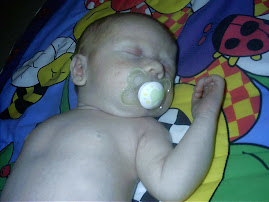Baby Wearing
Baby wearing is common in many cultures around the world. Due in part to the promotion of slings in attachment parenting books, in stores and on the Internet, more and more American parents are learning about baby wearing. The sling is the most practical, comfortable and versatile method of carrying your baby. Unlike front pack type carriers and back packs, slings can be used for newborns and toddlers alike. Slings make breastfeeding easy and discreet, and slings are much easier on the easily wearied arms and backs of parents.
The Benefits of Babywearing
Wearing your baby helps you develop a secure mutual attachment.
Babywearing increases parental sensitivity to a baby's needs.
Babywearing simulates the sensations of pressure, motion, warmth and security of the womb.
Carrying your baby in a sling reduces her level of stress hormones.
Babywearing can greatly reduce crying and fussiness. It also helps your fussy or tired baby fall asleep.
Babies sleep longer and more comfortably when in a sling.
Sling babies have a reduced incidence of colic and are less susceptible to vomiting and excess spitting-up.
Toddlers who were/are carried in slings initiate separation sooner, and become more self-reliant.
Babywearing has been shown to strongly benefit premature infants and lower their mortality rate.
Parents who wear their babies can more easily accomplish daily activities, tasks and chores.
The natural movement and stimulation provided by being in a sling promotes neurological development.
Babywearing gives children the message that they are safe, secure and loved.
Babywearing is the most comfortable way to hold a baby. You can use a sling on your shoulders, back or hip distributing your baby's weight evenly.
Wearing your baby in a sling provides her with constant and easy access to breastfeeding, and makes nursing in public easy and discreet.
Thursday, February 21, 2008
Subscribe to:
Post Comments (Atom)











No comments:
Post a Comment